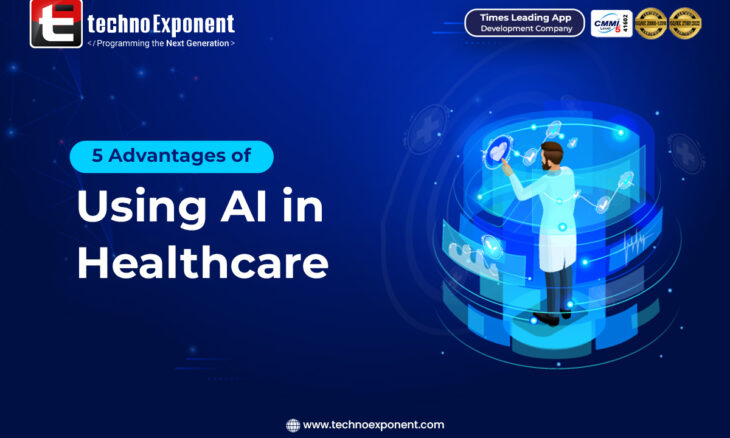
Over the past decade, artificial intelligence (AI) has come to the forefront as a significant force of transformation in the healthcare sector. By offering advanced capabilities, AI has enabled healthcare providers to improve diagnostic accuracy, streamline processes, and enhance patient care. From assessing risks to determining treatment options, the potential applications of AI in healthcare are vast and impactful.
AI’s capabilities extend far beyond what was once imagined. It can uncover links between genetic codes, enhance the precision of surgical robots, and optimize hospital operations. These advancements underscore AI’s growing importance as a transformative force in the healthcare industry. The global AI market is expected to reach $150 billion by 2026, cementing its role as one of the fastest-growing sectors worldwide.
As the volume of healthcare data continues to grow exponentially, AI technologies and machine learning (ML) algorithms offer tools to analyze this data effectively. These tools provide insights that aid in making informed decisions about diagnosis and treatment, ultimately improving outcomes for both patients and providers. Below, we explore five key areas where AI contributes to healthcare advancement.
1. Enhancing Population Health Management
AI can assist healthcare organizations in analyzing patient data to identify health risks and prevent illnesses. By integrating clinical, genetic, behavioral, and environmental data, AI tools can deliver a comprehensive view of patient health. This allows providers to detect potential health issues early and take preventive measures.
By using predictive analytics, healthcare organizations can classify populations based on genetic, behavioral, and environmental factors. These insights enable personalized care, ensuring that resources are allocated efficiently and patient outcomes are optimized. AI-powered tools also help identify patterns in population-level data, allowing healthcare providers to address emerging health concerns effectively.
2. Supporting Clinical Decision-Making
AI can significantly reduce the time and resources required to examine and diagnose patients. With ML algorithms, healthcare professionals can identify risks and make diagnoses faster and with greater precision compared to traditional methods. This reduces the likelihood of errors, which are a common cause of medical malpractice claims.
When considering AI’s importance, it’s worth noting its role in reducing medical errors. Studies from 2015 revealed that medical errors and faulty diagnoses contributed to 10% of all deaths in the United States. By streamlining diagnostic processes and analyzing complex data with precision, AI has demonstrated its potential to mitigate such errors, improving patient outcomes significantly. For instance, AI models have diagnosed breast cancer with greater accuracy than a group of experienced pathologists using deep learning techniques.
AI systems can analyze vast amounts of clinical data to offer a more complete understanding of patient health. These insights are provided in real-time or near-real-time, enabling care teams to make timely decisions. Automation of data aggregation and interpretation allows medical staff to focus on delivering high-quality care and improving patient outcomes.
3. Advancing AI-Assisted Surgery
AI has brought innovation to surgical practices through the use of robotics. Robotic systems, enhanced by AI, can perform intricate procedures with remarkable precision. These advancements have reduced waiting times for surgeries, minimized risks, and lowered the chances of complications.
AI also helps surgeons by providing real-time insights during procedures. This enables healthcare professionals to make informed decisions at critical moments, ensuring better surgical outcomes. The integration of AI in surgical practices has contributed to safer, more efficient operations.
4. Improving Healthcare Accessibility
AI has the potential to address healthcare disparities, particularly in regions with limited access to medical resources. In underdeveloped areas, a shortage of trained professionals and inadequate facilities often hinder the delivery of quality care. AI can bridge these gaps by enabling remote diagnostics and treatment.
For instance, AI-powered tools can quickly analyze medical imaging, such as X-rays, CT scans, and MRIs, providing accurate interpretations. This reduces dependency on specialists and ensures that patients in remote locations receive timely care. Additionally, educational institutions are utilizing AI technologies to enhance the training of medical students and professionals, ultimately improving healthcare quality in underserved regions.
5. Enhancing Operational Efficiency
Modern healthcare systems involve complex processes and interdependent operations. AI can simplify these processes, improving efficiency while reducing costs. By analyzing large datasets, AI provides insights that help healthcare organizations optimize resources and improve performance.
For example, AI can streamline administrative workflows, such as managing patient schedules and processing insurance claims. This reduces the burden on staff and ensures resources are utilized effectively. Additionally, AI tools can identify bottlenecks in operations, enabling healthcare providers to make adjustments that enhance productivity and patient satisfaction.
Conclusion
The growing volume of healthcare data presents both challenges and opportunities for the industry. AI offers solutions that help organizations overcome operational inefficiencies, address worker shortages, and improve patient care. By analyzing and interpreting data, AI empowers healthcare providers to make informed decisions that positively impact patient outcomes.
The application of AI in healthcare is transforming how care is delivered, making it more efficient and effective. With its ability to process and analyze vast amounts of data, AI is helping healthcare providers meet clinical and operational goals while improving the overall quality of care.
 +44 141 628 8980
+44 141 628 8980
 (786) 269-2247
(786) 269-2247
 +61 872007153
+61 872007153
 +91 8900027268 (Sales only)
+91 8900027268 (Sales only)








